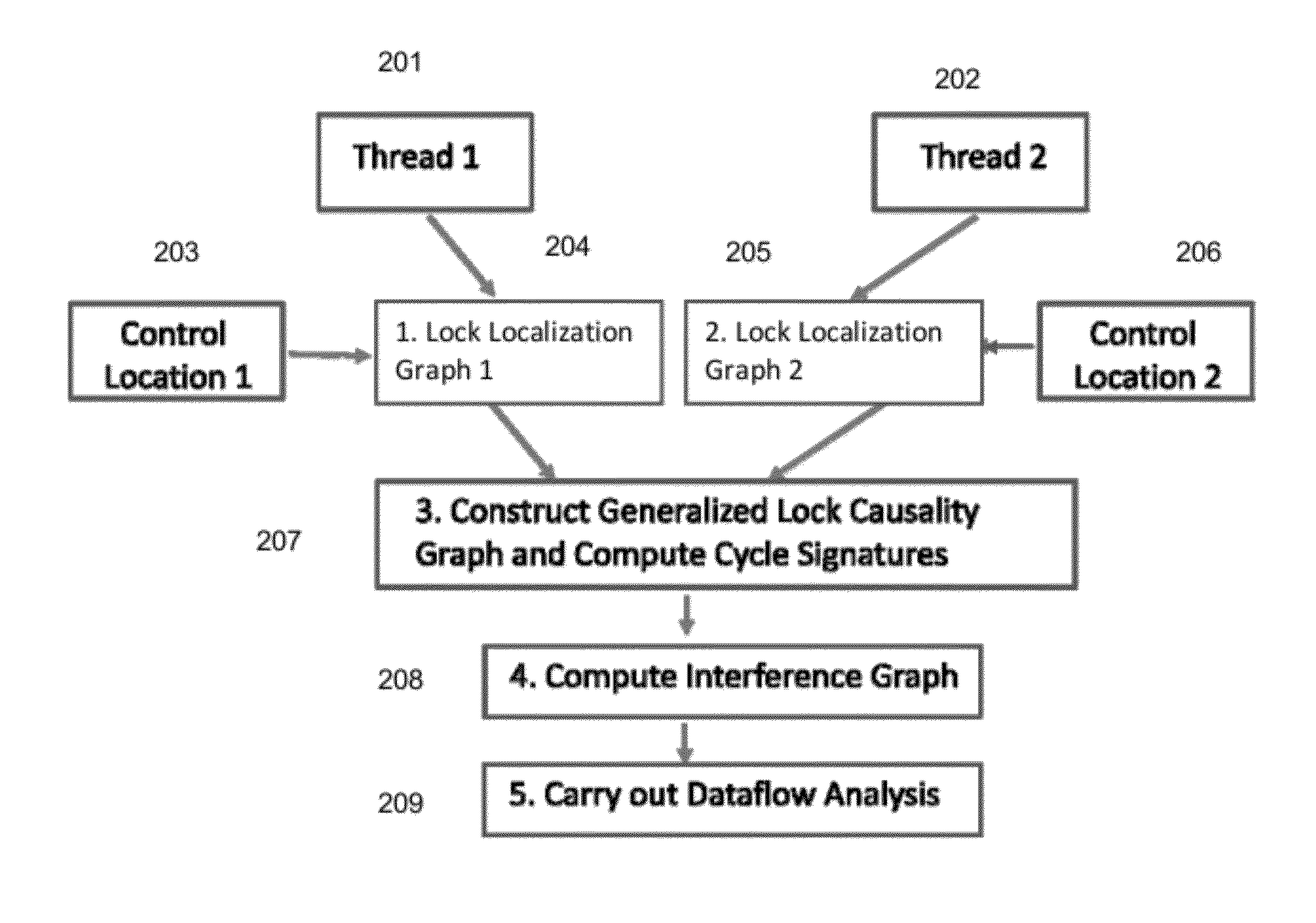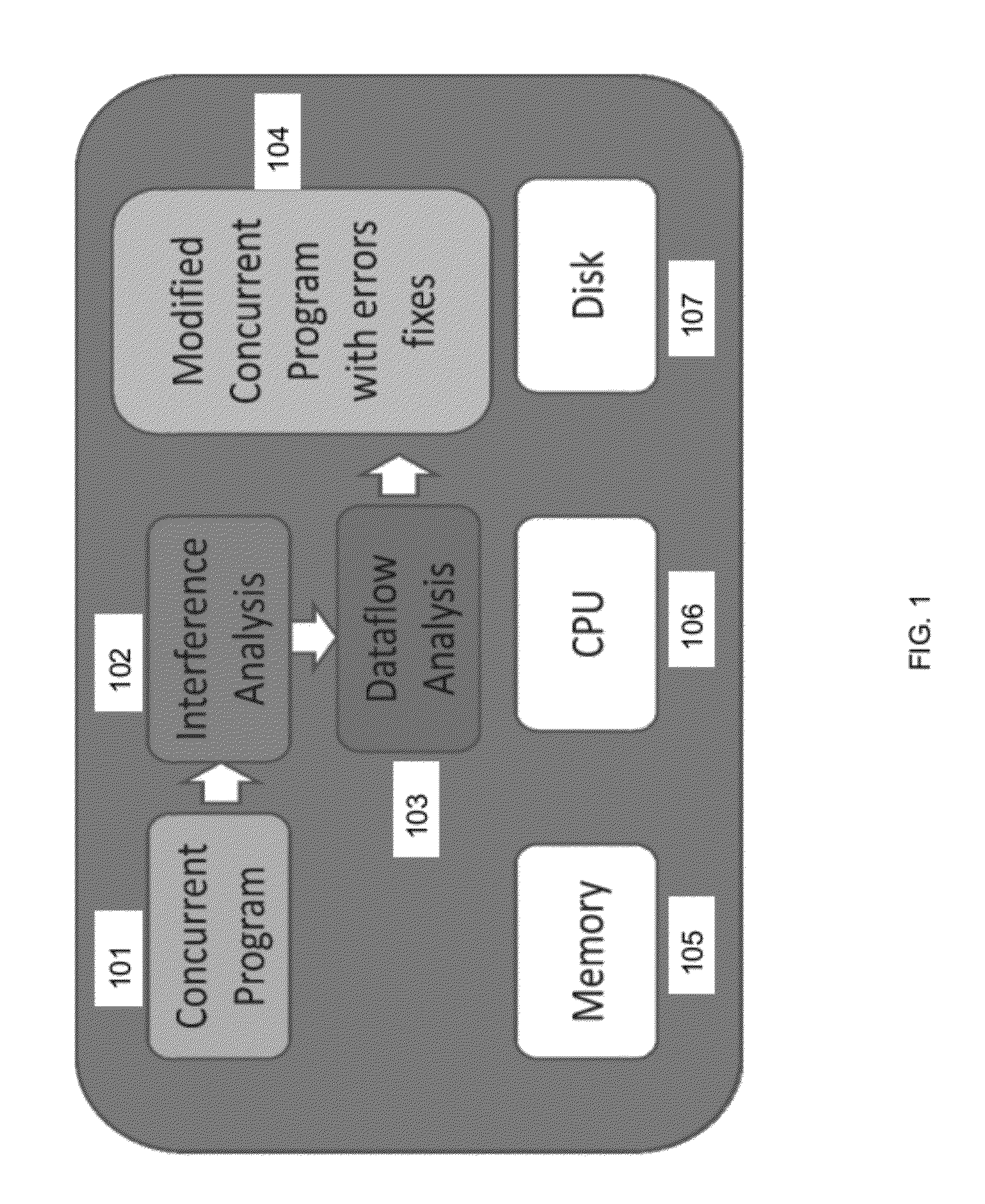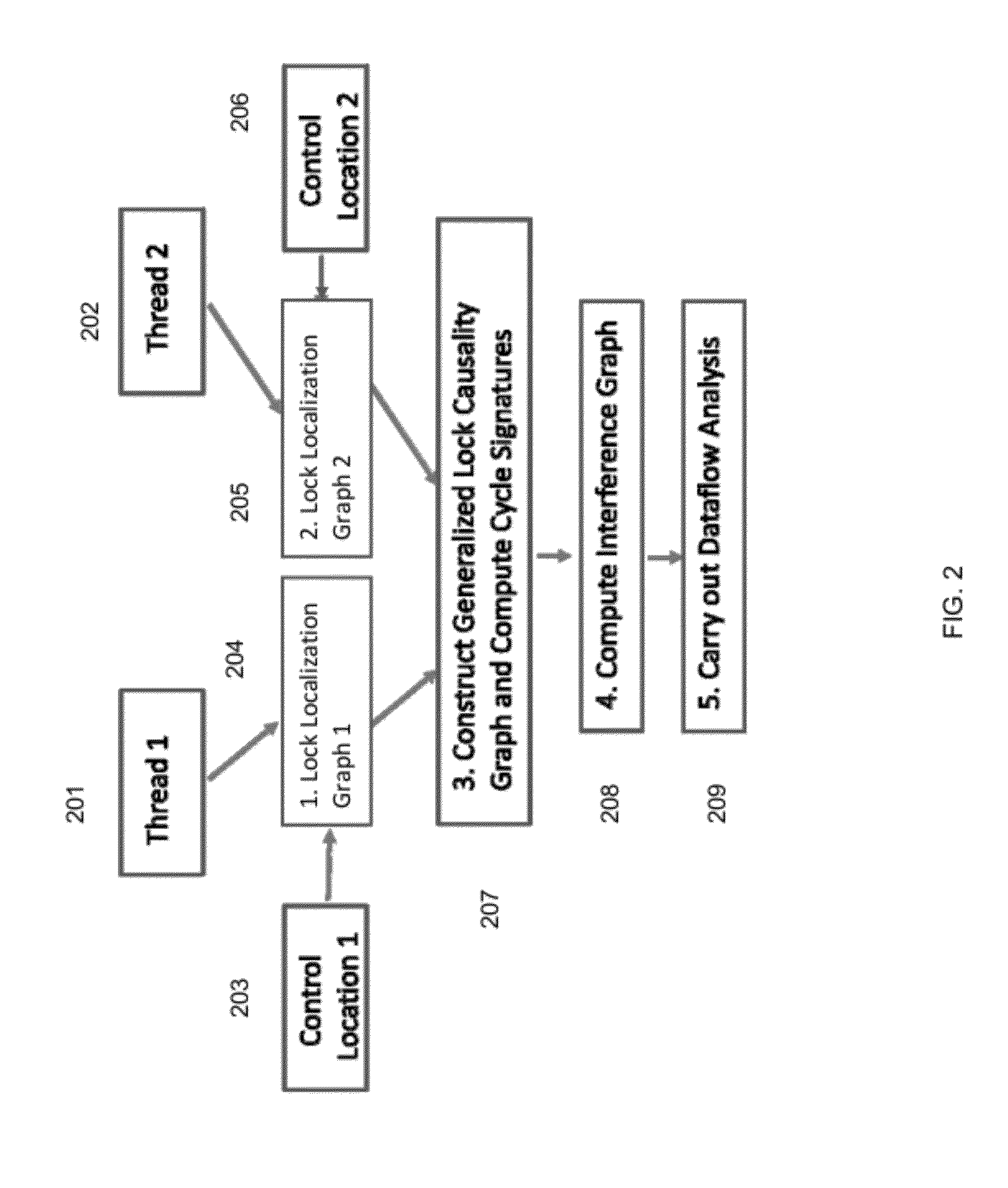Computer Implemented Method for Precise May-Happen-in-Parallel Analysis with Applications to Dataflow Analysis of Concurrent Programs
- Summary
- Abstract
- Description
- Claims
- Application Information
AI Technical Summary
Benefits of technology
Problems solved by technology
Method used
Image
Examples
Embodiment Construction
[0013]The present invention is directed to a computer-implemented method that provides for formulating a new notion of lock pattern automata that capture static reachability information for concurrent programs with both locks and wait / notify and / or broadcasts. Lock pattern automata (LPA) track local lock access patterns between consecutive pairs of control locations of interest, e.g., shared variable / wait-notify / broadcast accesses, in a thread. In order to isolate the locking statements to track we use the notion of a bi-directional lock causality graph (BLCG). LPAs are built once for each thread but may be queried time and again for deciding pairwise reachability between global control states of concurrent programs in order to determine thread interference. This compositional approach has many applications, including dataflow and static analysis of concurrent programs.
[0014]While, in general, reasoning about thread interference is an undecidable problem. The invention makes use of ...
PUM
 Login to View More
Login to View More Abstract
Description
Claims
Application Information
 Login to View More
Login to View More - R&D
- Intellectual Property
- Life Sciences
- Materials
- Tech Scout
- Unparalleled Data Quality
- Higher Quality Content
- 60% Fewer Hallucinations
Browse by: Latest US Patents, China's latest patents, Technical Efficacy Thesaurus, Application Domain, Technology Topic, Popular Technical Reports.
© 2025 PatSnap. All rights reserved.Legal|Privacy policy|Modern Slavery Act Transparency Statement|Sitemap|About US| Contact US: help@patsnap.com



